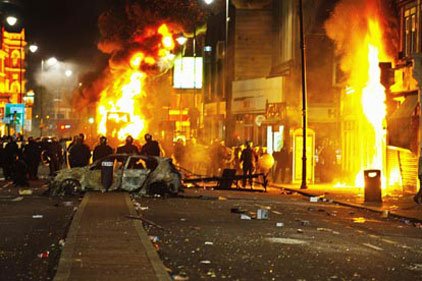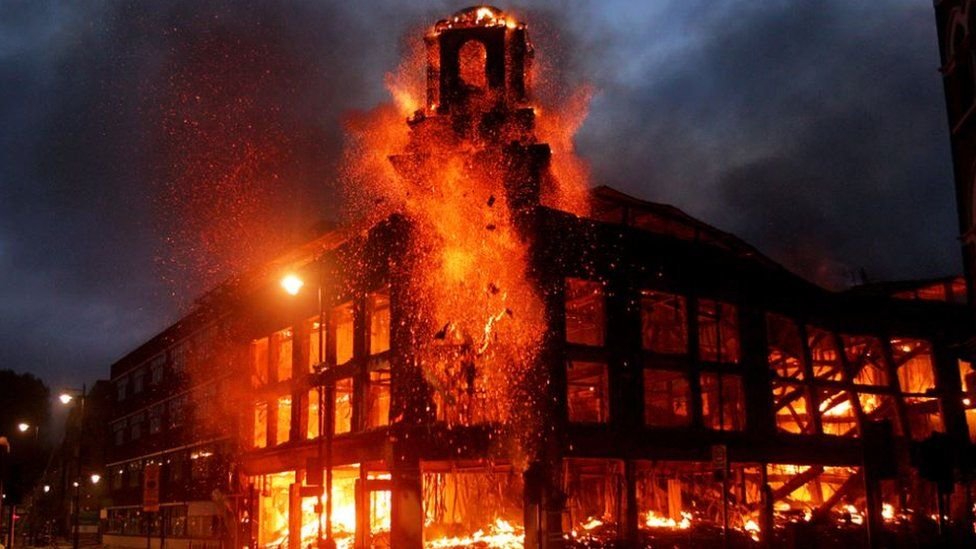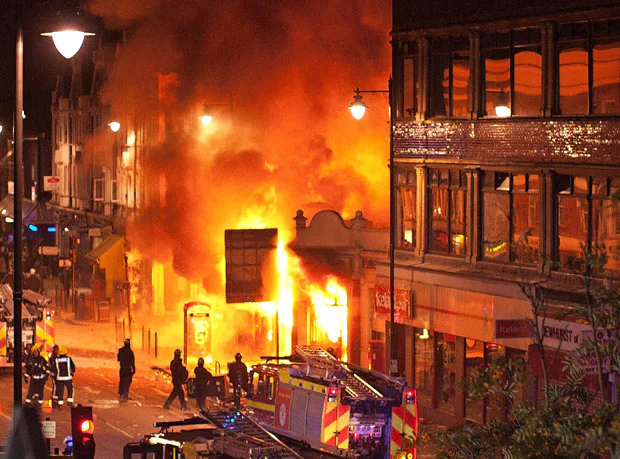On a tumultuous Thursday evening, the Harehills neighborhood in Leeds, UK, became the epicenter of severe unrest. The violence that erupted has drawn widespread attention, leading to a significant police presence and heightened security measures in the area. This article delves into the events that unfolded, the responses from authorities, and the broader implications of the UK Riots.
The Catalyst for Unrest
The disturbance in Harehills began in the late afternoon when West Yorkshire Police responded to a disturbance involving agency workers and a group of children in Luxor Street. Initial reports indicated that the situation involve local children being taken into care, a process that seemingly trigger the chaos. Eyewitnesses and local reports suggest that this intervention led to heightened tensions within the community.
As news of the disturbance spread, crowds began to gather, and the situation rapidly deteriorated. Videos circulating on social media showed a scene of escalating violence, with one clip capturing a police car being attack and its windows shatter before it was ultimately overturned. Another video depict a double-decker bus being set on fire, while others threw debris at it. These visuals paint a stark picture of the disorder, highlighting the severity of the situation.
The Police Response
In response to the escalating violence, West Yorkshire Police deployed additional officers and specialist public order resources to manage the situation. The police described the incident as a “serious disorder,” emphasizing their commitment to addressing the unrest. A statement from the force made it clear that they would use the full weight of the law against those responsible for the violence. The police’s efforts to control the situation included setting up barriers and advising residents to avoid the area.
By the evening, the situation had intensified, with multiple pockets of disorder emerging. The police had initially attempted to remove the agency workers and children from the area to ensure their safety. However, the unrest continued to spread, prompting the need for further intervention. Despite the increased police presence, the situation remained volatile, and by late evening. A helicopter was deployed to assist with the management of the incident.
Community and Political Reactions
The riots drew immediate reactions from local and national figures. UK Home Secretary Yvette Cooper expressed her profound dismay at the scenes of violence. In a statement, she described the unrest as “shocking” and reaffirmed her support for the police’s response. Cooper’s comments underscored the seriousness with which the authorities viewed the situation and their commitment to restoring order.
Councillor Salma Arif, representing Gipton and Harehills, also weighed in, urging residents to stay indoors and avoid the affected area. Her message, delivered through social media, highlighted the need for community cooperation during such crises. Similarly, Mayor of West Yorkshire Tracy Brabin praised the emergency services for their efforts and urged those inflaming community tensions to reconsider their actions. Brabin’s remarks reflected a broader call for calm and unity in the face of adversity.
The Impact on the Community
The impact of the riots on the Harehills community has been significant. The violence and destruction have left a visible mark on the neighborhood, with streets littered with debris and damaged vehicles. Reports of a bus being set alight and a police car being overturn have added to the sense of chaos. Fortunately, there have been no reports of injuries, a fact that has been acknowledge by both local officials and the police.
Local businesses and services have also been affect. A spokesperson for First Bus in Leeds confirm that one of their vehicles was set on fire, though it was empty at the time. The company’s response included diverting services away from the area to ensure the safety of both staff and passengers. This disruption to public transport underscores the broader impact of the riots on daily life in Harehills.
Analyzing the Causes
Understanding the root causes of the Harehills riots requires a closer examination of the social and political context. The unrest seems to have been spark by the contentious issue of children being taken into care. This intervention, often a sensitive and emotional topic within communities, may have contributed to the heightened tensions and subsequent violence.
The involvement of local children and the reaction from the community suggest that the riots were driven by a combination of frustration, anger, and a sense of injustice. The role of social media in amplifying these emotions cannot be overlook. As the viral nature of videos and images play a significant role in escalating the situation.
The Broader Implications
The UK riots are a stark reminder of the complex dynamics that can lead to civil unrest. They highlight the challenges faced by authorities in managing community tensions and the potential for seemingly localized incidents to escalate into broader disturbances. The response from law enforcement, political leaders, and the community will be crucial in addressing the underlying issues and preventing future incidents.
In the wake of the UK Riots, there will likely be a concerted effort to investigate the causes and address the concerns raised by the community. This may involve increased dialogue between residents and authorities. As well as initiatives aimed at improving social services and community relations.
Conclusion
The recent riots in Harehills, Leeds, represent a significant event in the ongoing discourse about social unrest in the UK. The violence and destruction witnessed on Thursday evening have underscored the need for effective communication and intervention strategies in managing community tensions. As the situation continues to unfold, the focus will be on restoring order. Addressing the root causes of the unrest, and ensuring that such incidents do not recur. The response from authorities and the community will be crucial in navigating this challenging period and working towards a more cohesive and resilient society.














